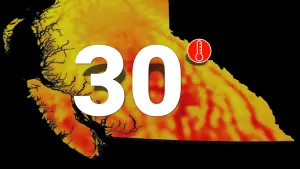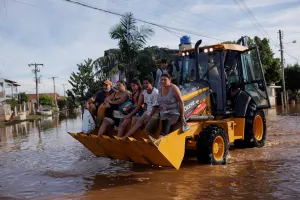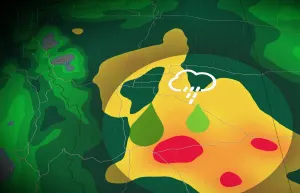
What is a State of Emergency? Here's how it affects you
Intense blizzard conditions have prompted states of emergency to be declared in Newfoundland
As of Friday morning, states of emergency have been declared in St. John's, Mount Pearl and Paradise, due to severe weather conditions that have spread across Newfoundland.
WEATHER HIGHLIGHTS:
Newfoundland to see 130+ km/h winds, 40-70+ cm of snow, lasting to Saturday in worst-hit areas
Blizzard conditions linger well into Saturday
9-12 metre storm surge for parts of the Newfoundland coast
Winter storm warnings in effect for eastern Nova Scotia, risk of 10-20 cm for Cape Breton
Stay aware of ALERTS in your area
"From Thursday at 1:30 p.m. to 4:30 a.m. on Friday, the system dropped 26 millibars in 15 hours, surpassing “weather bomb” criteria over the east coast," says Weather Network meteorologist Matt Grinter. "And this system will only get stronger today."
WHAT, EXACTLY, CONSTITUTES AN EMERGENCY?
Each province and territory has their own exact wording, as part of their own unique emergency management regulations, for what is considered an emergency.
The common theme across the country, though, is any event, situation or condition, either present or imminent, due to an accident, intentional act, or force of nature, that requires the prompt coordination of actions and resources to protect the health, safety and welfare of people, or prevent or limit damage to property or to the environment.
WHAT HAPPENS WHEN A STATE OF EMERGENCY IS DECLARED?
Regardless of whether it is declared at the municipal or provincial level, a state of emergency gives the government and authorities a wide range of special powers to deal with the situation at hand.
They can, where the act is considered reasonable to alleviate damage or harm during the emergency:
in some cases, conscript citizens to help with efforts to manage the emergency
in others, to authorize qualified citizens to assist in emergency management efforts
confiscate equipment and property that will assist in emergency management
make goods and resources available for distribution to those areas impacted
fix prices of goods and services, to avoid incidences of "price gouging"
impose a curfew on residents of the affected areas
prohibit, or at least limit, travel to, from or within the areas impacted by the emergency
establish emergency shelters
enter any building without a warrant
order residents to evacuate affected areas
The above is just a list of common examples, as powers vary depending on the province in which the state of emergency was declared. Also, not all of the measures are typically exercised (for example, conscripting citizens is apparently extremely rare). In those cases where property is confiscated during the emergency, owners are compensated by the government. At the same time, the government, and those acting on its behalf during the emergency, are typically exempt from any civil liability, unless they were somehow grossly negligent, or they were not acting in good faith.
Declaring a state of emergency also gives the government access to emergency funding, to help deal with the situation as it happens, and for any cleanup required afterward. This typically includes funding offered to residents who suffered losses or damages due to the emergency, which are not covered by insurance.
FOR A LIMITED TIME, ONLY!
When a state of emergency is declared, it is understood to be a temporary measure.
Depending on the province or territory, a state of emergency automatically expires within a specific time limit, 7 days or 14 days, for example, unless it is revoked sooner. A state of emergency can be extended, though, in cases where the emergency persists for longer than the allotted time limit. For example, B.C.'s 2017 state of emergency due to wildfires lasted over 50 days. In that case, the government had to renew the state of emergency every two weeks, to provide the necessary assistance to firefighters and to those who were forced to evacuate.
As indicated above, weather isn't the only reason to declare a state of emergency. It can be in response to an epidemic or pandemic, a terrorist attack, the threat of war, or a natural disaster such as an earthquake.
Severe weather is simply the most common reason why a state of emergency is declared.










